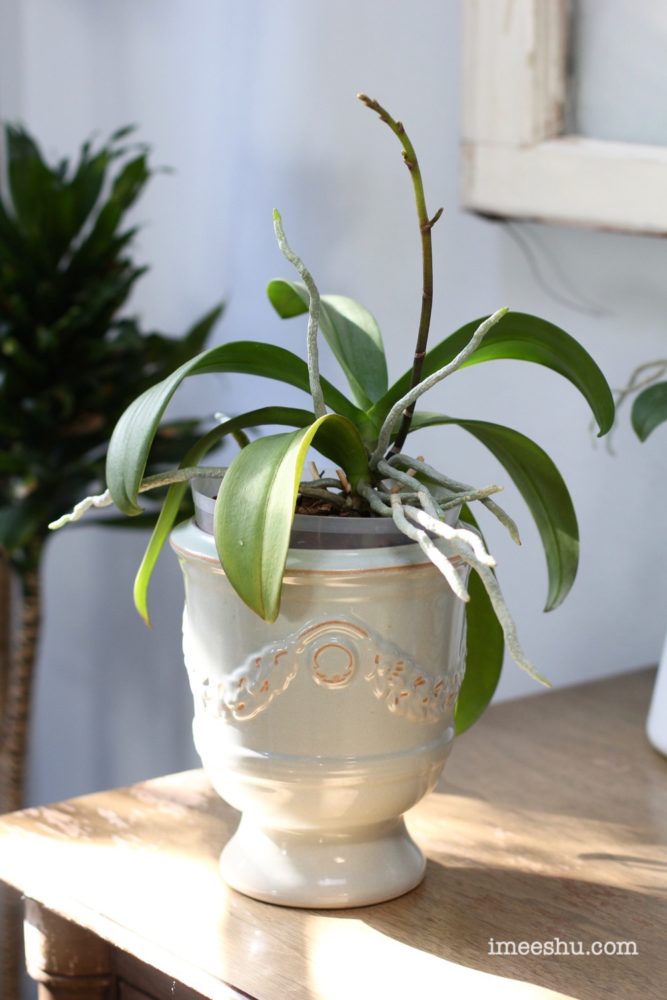
I’ve always loved orchids, but was always intimidated by them.
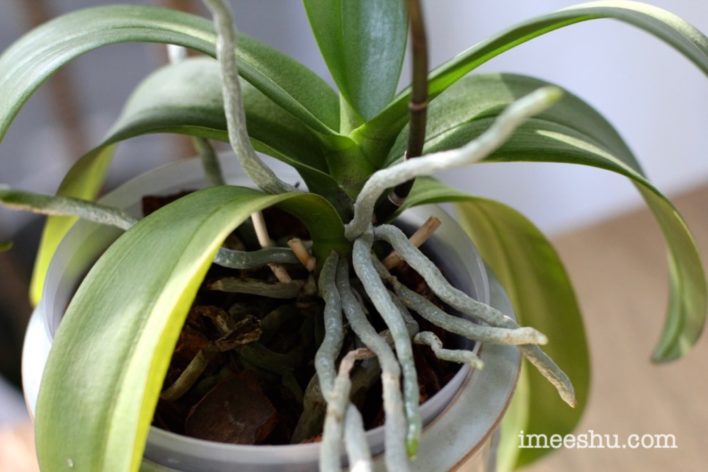
Last year, a neighbor gave me the most gorgeous Phalaenopsis orchid (the most common variety you see at grocery stores), stuck it in a southwest facing window nook and it bloomed for nearly a year!
I thought “Self, you’re good at this!”
Then….I stumbled upon a YouTube video about replanting orchids.
And I was humbled. Deeply.
And let me be clear…I’m still a complete orchid noob, but I’m documenting my journey so that I don’t make the same mistakes in the future.
Around Halloween (3 months ago), I transplanted all of my orchids. And with the exception of the orchid above, I realized that most of them were in very bad shape.
Root rot. Ice burns on roots – let’s have a sidebar about this. Why in the world would anyone think putting ice on a tropical plant is a good idea!? Last time I checked, it doesn’t regularly rain ice cubes in Hawaii. 🙂
If I’m able to share anything with you today, please DON’T water your orchids with ice cubes. It will burn your roots and put your plant into shock.
Anyway…I’ve tried a few different methods to get these orchids back in shape. Low and behold…one has already sent up a flower spike! LOOK AT THIS!!!
And the air roots are abundant.
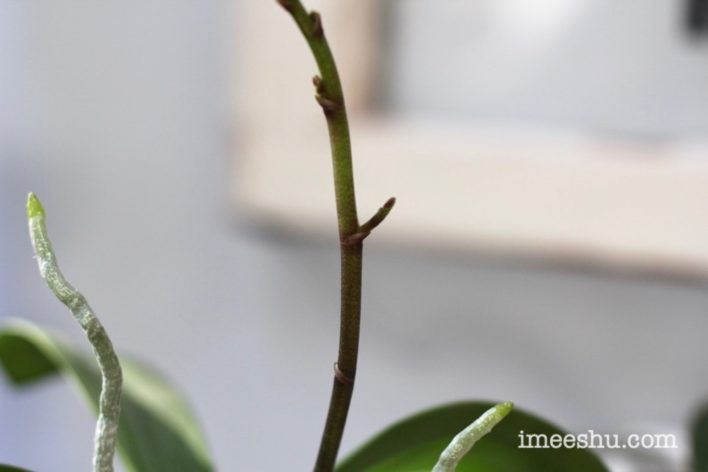
The last time I had a flower spike like this, my oldest son was 4. He snapped it off and said “Here Mommy, some flowers for you!” I nearly died of joy…but mostly shock. Let’s be honest. I was bummed, but I tried not to let on. He knows better now. 🙂
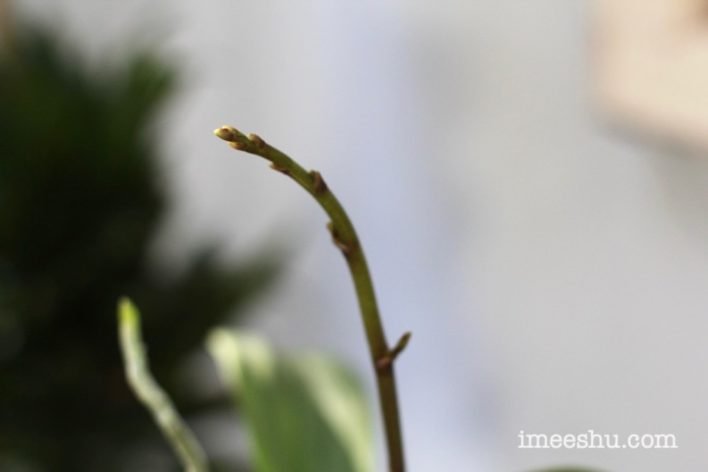
So I’ve been experimenting with different methods of reviving my orchids. In all cases, I removed all of the debris from the store-bought, overly-packed roots. I removed dead roots (dark, soft, mushy). Rinsed everything well in tepid to slightly-warm water.
On some, I re-packed into fresh orchid potting mix into an orchid pot with plenty of holes and stuck them in the greenhouse during a very cold week. The cold is supposed to stimulate flower spikes, so I figured since most of these were mostly dead (name that movie!), a little visit to the cold greenhouse wouldn’t hurt them.
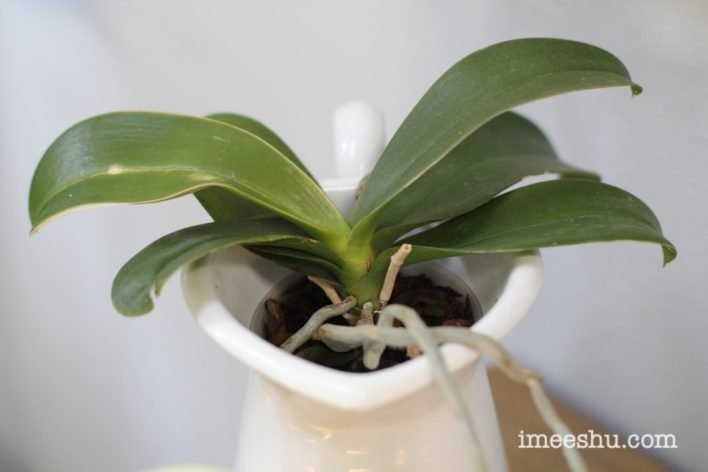
After I brought them in, I watered every 10 days or so, soaking in tepid water with an orchid fertilizer for 5-10 minutes, trying to let all of the roots draw in as much water as possible until they turned a dark green.
See the right root below? There’s a section coming off the top part…that’s where the original root was when I repotted. It wasn’t looking very healthy at that spot…and since repotting, it’s now sent off a new root in a slightly different direction.
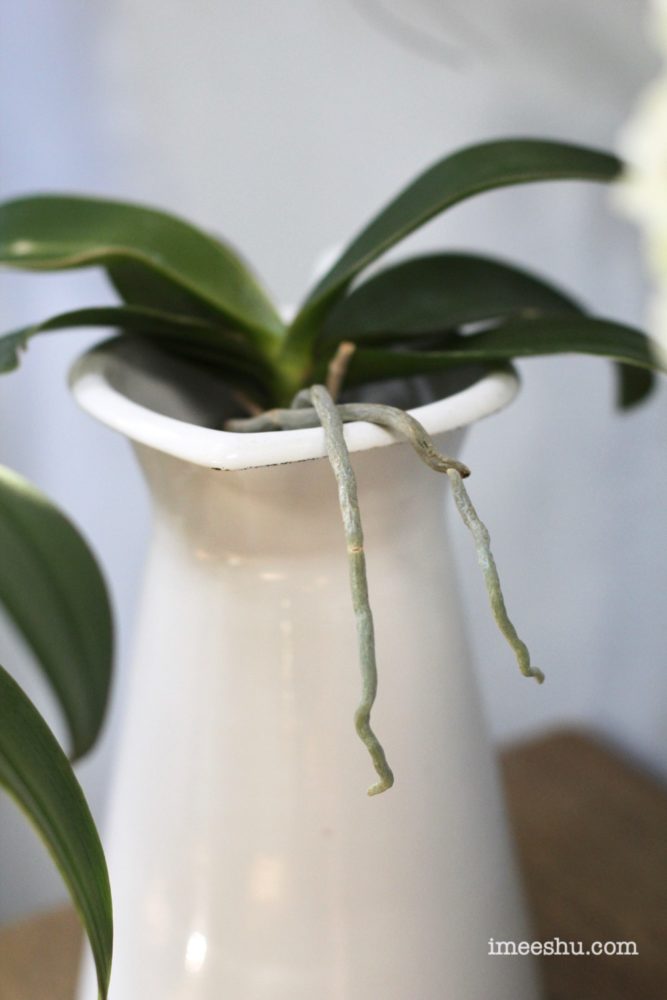
And then there’s Clint, as in Eastwood. The one below had 2 leathery leaves that reminded me of Clint’s skin in The Good, Bad and the Ugly. You know that desert scene where his lips are all peeling and cracked? Yeah, that.
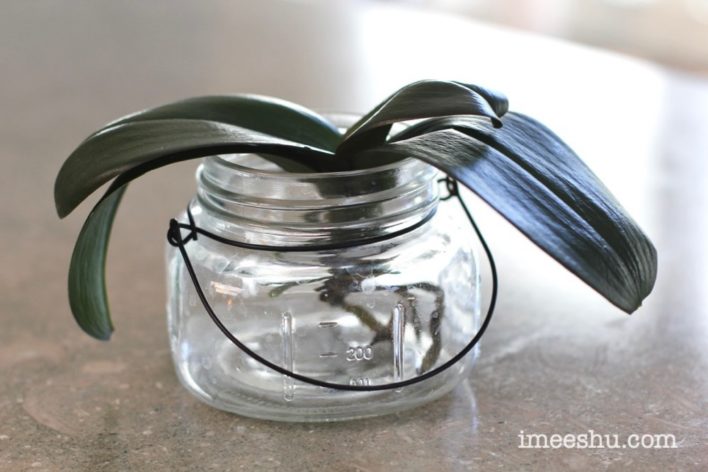
This orchid’s two leathery leaves (the lower leaves on each side) reminded me of Clint. And while most people name their orchids girls’ names, I’m sticking with Clint.
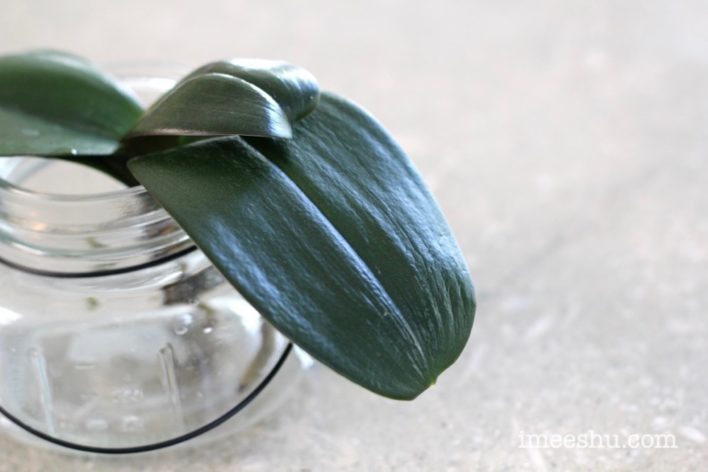
This orchid seemed so dehydrated that I decided to go with a full water culture (aka FWC). It’s where you literally have the bottom parts of the roots in water all the time. Some people do a semi-water culture, which allows for 5 days in water, and 2-3 days to dry. The funny thing is that even the orchid gurus on YouTube struggle to figure out why certain varieties prefer full water culture, while others prefer semi. Go figure?!
For Clint, I decided to try full water culture since its roots were in such bad shape. I had this one about 10′ from a southwest-facing window, so not too much light, which is probably why the leaves are a dark green.
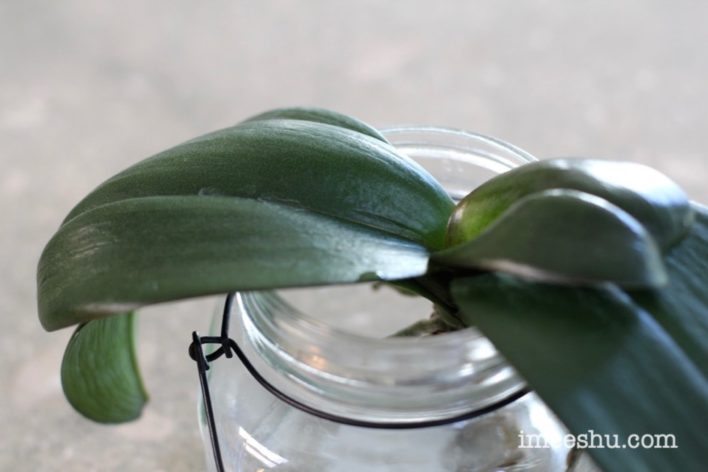
As you can see, Clint had 3 fairly healthy roots and 3 fairly-rotted roots. When a root is healthy, it’s firm and green. Once the root gets water, it immediately turns dark green. As you can see below, the roots’ outer coating, called velamen, on the right side are black and yellow. The middle one on the right was mushy.
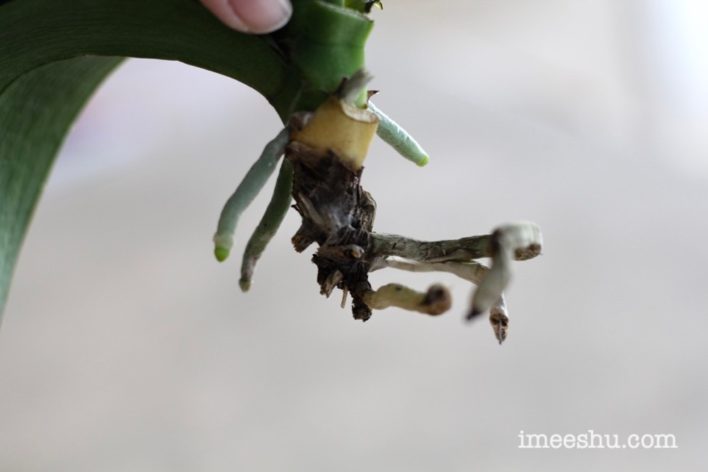
The good news is that 3 months in, one of the leaves has completely healed and is no longer leathery. The other two leaves are shiny and very happy-looking, though growing slowly.
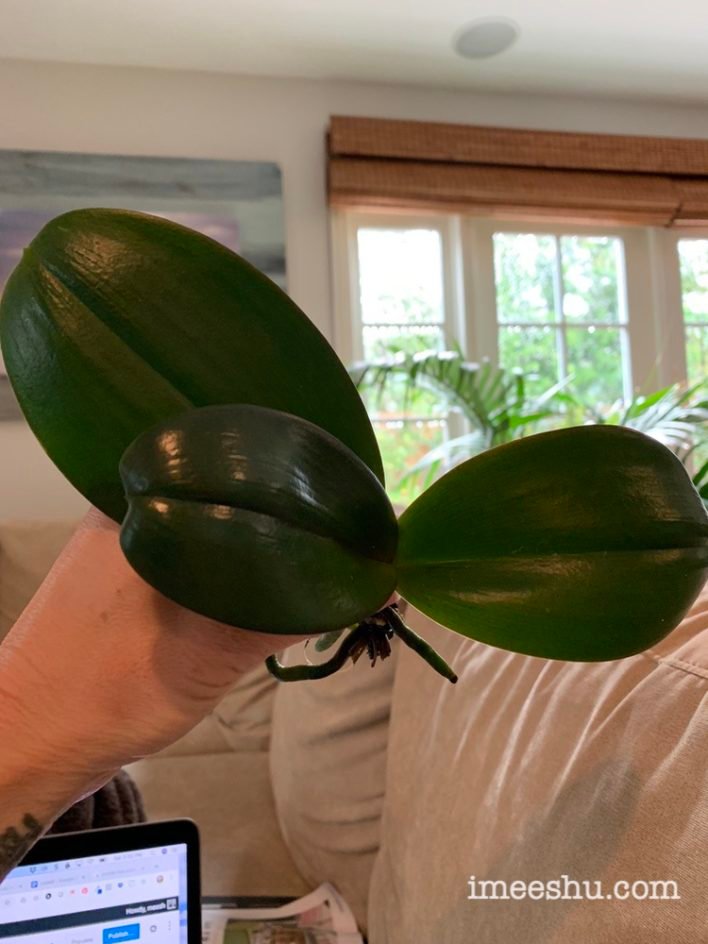
The bad news is that the uber-leathery leaf turned yellow and fell off and the velamen on the mushy root has peeled away, leaving just the thin, wiry root. I’ve seen some people cut this wiry root off, while others swear they can still take up water, so I’ve decided to leave this non-velamen root intact.
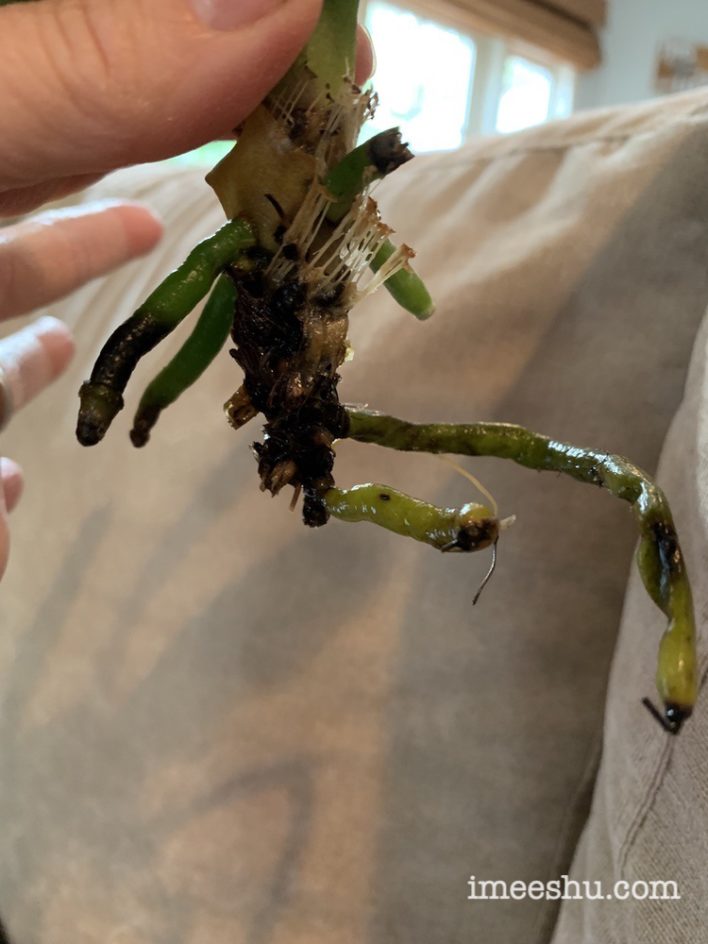
And…the healthy green roots on the left are starting to get black. So, I’m shifting gears a bit and will move to a semi-water culture and let this guy dry out a bit for a few days and move it into a bit more sunlight.
This next one was suffering from what I think was a sunburn. The plant below was in a directly south-facing window and I think the holes are from sun damage. Or maybe it’s some sort of fungus, but again, I’m a noob and am not really sure. Does anyone have ideas?
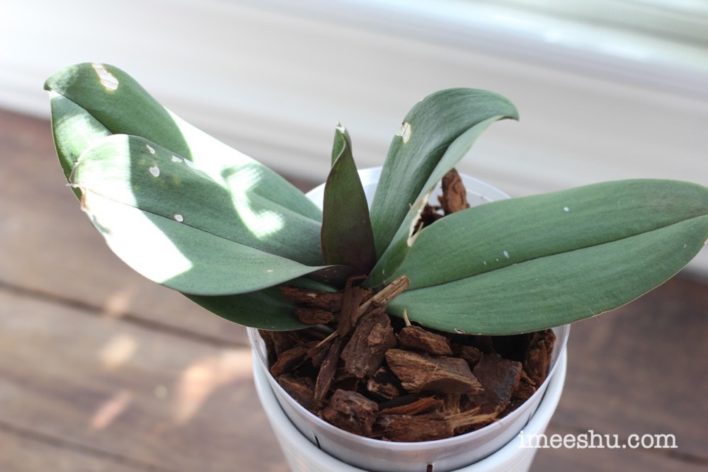
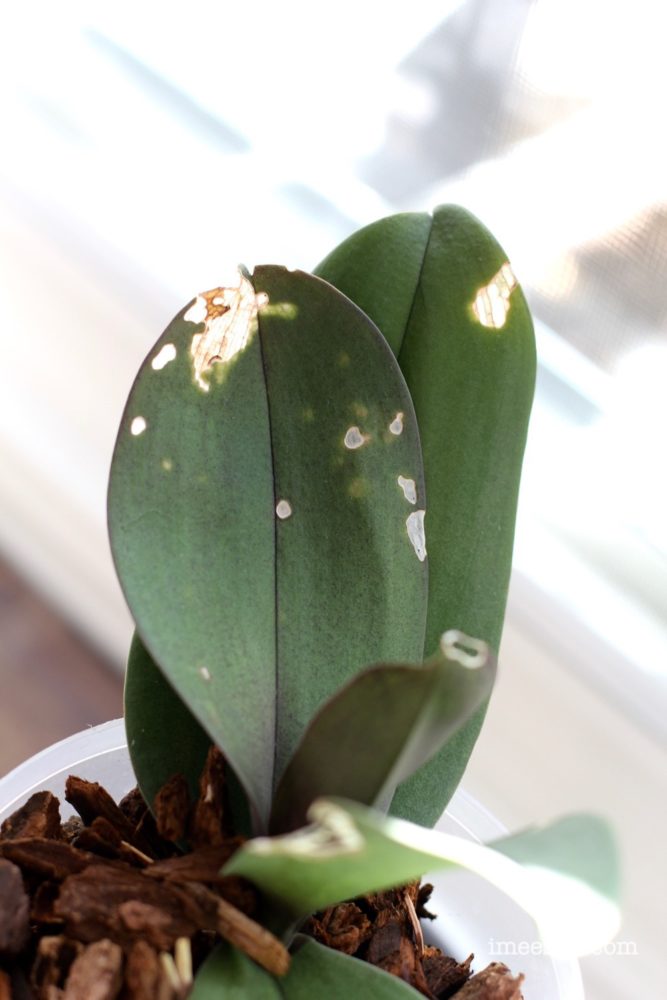
I replanted it into orchid mix, but it still seemed too dehydrated, so I’ve since moved it to a full water culture and it seems to be perking up a bit.
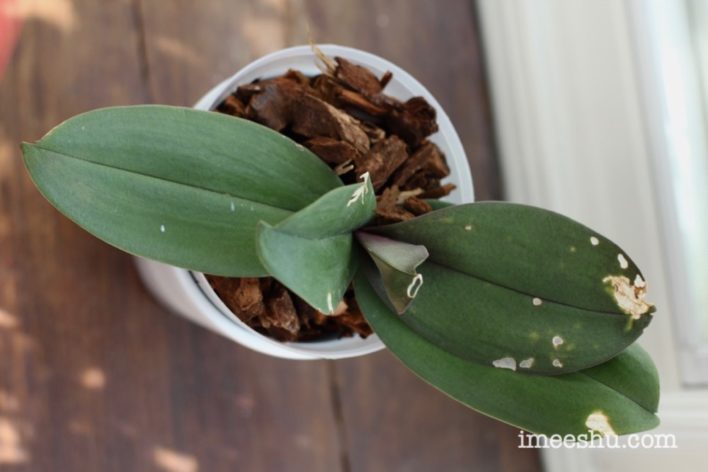
All of this is an experiment and I’ve got at least 10 orchids in my ICU at the moment. I’m trying all different methods. Some in full water culture, some in semi water culture, some in orchid mix and some in hydroton clay sitting in a tiny bit of water.
Stick with me if you’re interested in following my progress!